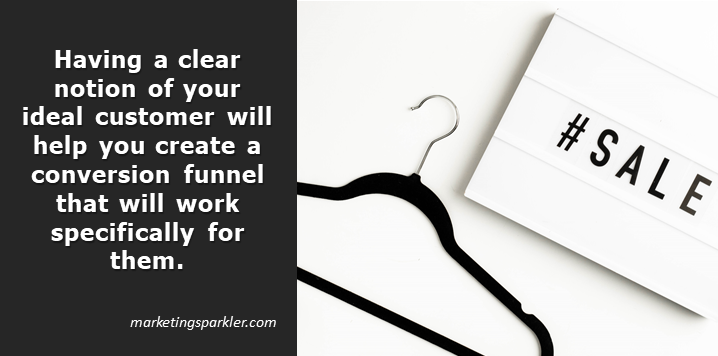Ecommerce has never been more competitive. Revenue in this market is expected to reach $2.2 trillion in 2020, with a tendency to rise even further in the following years.
Digital marketing and eCommerce experts are bound to find new ways to communicate with their audiences, as it is becoming increasingly difficult to stand out from the crowd and make one’s brand visible online.
In this guide, we will introduce some of the most prevalent concepts involved in eCommerce marketing, as well as talk about some marketing channels and strategies you could use to successfully market your online business.
Everything You Need to Know About Ecommerce Marketing
What is Ecommerce Marketing?
As you might have deduced, eCommerce marketing refers to marketing in the sphere of eCommerce. This pertains to activities that guide potential customers to purchase eCommerce goods or services.
It enables businesses to create awareness about their eCommerce store or platform, drives traffic to the said platform, and finally, converts visitors into paying customers.
Creating An Ecommerce Marketing Plan
Before you can begin marketing your eCommerce business successfully, it is imperative to create a well-thought-out marketing plan, which can act as a guide on your way to executing your strategy.
Here are a few steps you can follow:
Define Your Objectives
Start by setting out clear goals for your business.
To do this properly, you’re going to want to review the conversion rates for your specific niche.
Considering what is working in the industry at the moment is important if you want to avoid disappointment later on.
We tend to set our goals high, especially when we’re excited about starting a new project. However, looking at industry-wide conversion rates beforehand should give you a clear idea of what to expect.
Assess Your Competition and Target Audience
Consider your ideal customer. Think about their purchasing power, interests, personality traits, and other psychographic, geographic and demographic characteristics. Once you have an idea about all this information in your mind, try to collate it and create several buyer personas.
Having a clear notion of your ideal customer will help you create a conversion funnel that will work specifically for them.
At the same time, take a look at the activities of your prospective competitors. See what it could be that is working, or not working, for them.
They might be creating lots of YouTube videos, or investing heavily in Instagram influencers.
Try to use this information to think of the most efficient techniques to get your eCommerce marketing strategy up and running.
Plan Out Your Marketing Tactics and Strategies
Now that you’ve got your marketing objectives in place, as well as an idea about your potential customers, think about the activities that will help you achieve your goals.
This will allow you to hit your sales targets in the long run, by choosing the appropriate tactics and strategies and implementing them through the right marketing channels.
If you’re planning on promoting a B2C eCommerce store, for example, it might be a good idea to make investments in social media marketing, influencer marketing or Search Engine Optimization (SEO), depending on your target audience.
Once you’ve made it clear what your conversion funnel is, determining the marketing channel that would create the best results should not be too difficult.
Of course, the main factor to focus on here are the stages of the marketing process. SEO will be crucial for brand awareness, while email marketing can keep your customers engaged over the long term.
MarTech Stack
A marketing technology (MarTech) stack is a set of software applications tailored to your marketing pursuits. To create one, you first need to identify the marketing channels you should be focusing on.
The next step is finding the applications and software tools that can manage and automate your activities on different channels as much as possible. To make your stack robust, choose products that offer a wide range of features, such as social media and email marketing management.
Ecommerce Marketing Channels
In this section, we will take a look at a few eCommerce marketing channels that you could utilize in order to reach your goals more efficiently.
SEO
If you want your eCommerce store to organically rank high on search engines, you’ll need a sound SEO strategy. Here are a few steps you can take toward this goal:
-
- Make sure your website is mobile-friendly.
- Check Google PageSpeed Insights for page load time.
- Identify the keywords you want to rank for through Google Keyword Planner.
- Create a Google My Business profile to strengthen your local SEO presence
- Fix technical issues like duplicate pages
Email Marketing
Using email marketing properly can significantly contribute to your conversion rates. Email is still not going anywhere, no matter how many articles pop up about it losing its prominence in eCommerce marketing.
Use smart marketing tactics to create a mailing list. For example, ask your visitors for their email in exchange for enticing downloadable content, or use strategically placed lead generation tools such as pop-ups and header bars.
Social Media
Ecommerce businesses can experience huge benefits from the use of social media marketing. According to an August 2019 Statista survey, 44% of US internet users between the ages of 18 and 34 have previously bought something through social media. The same is true for 34% of users aged 35 – 54, as well as 24% of the 55+ demographic.
This goes to show that social media can be a great tool for eCommerce marketers thanks to its ability to reach a wide audience. It is also a visual medium making it easy to use videos and images to attract your potential customers.
Ciao,
Miss Kemya




